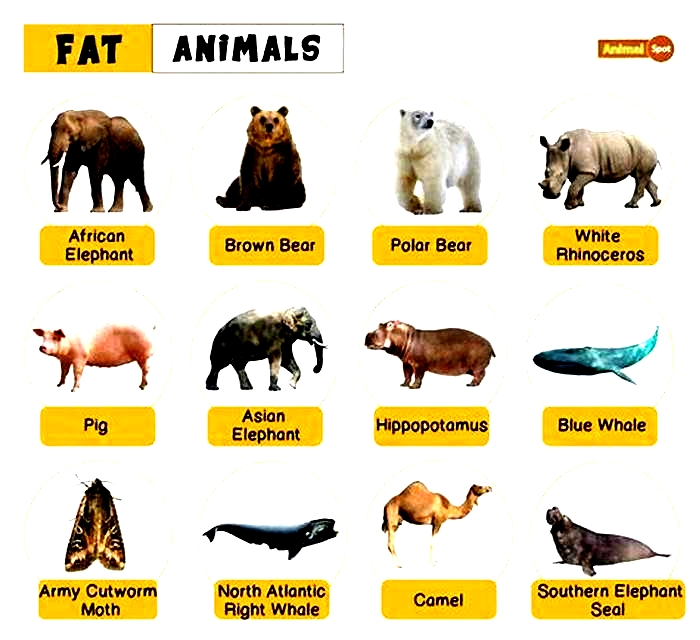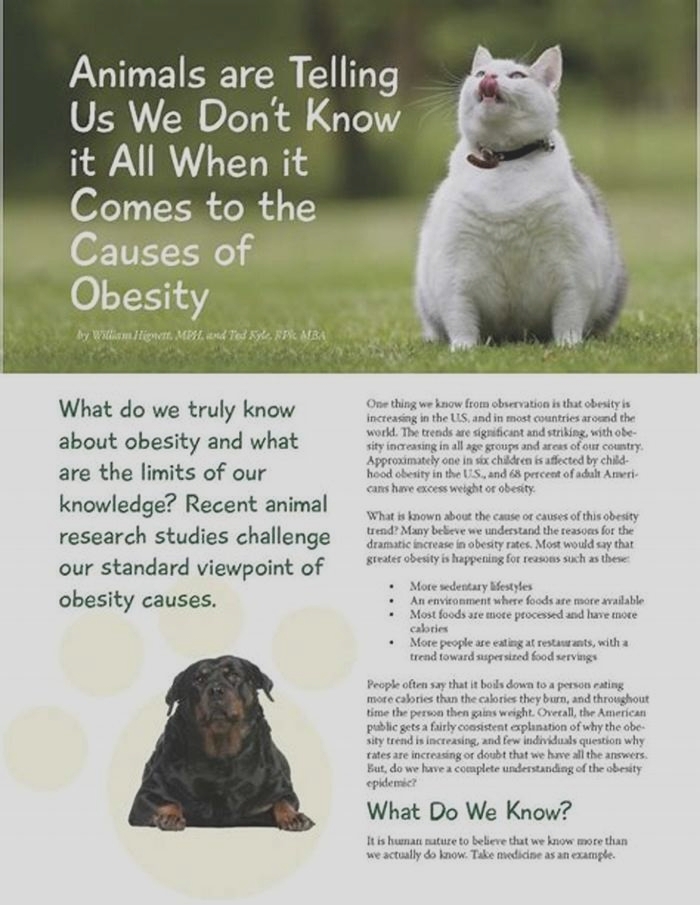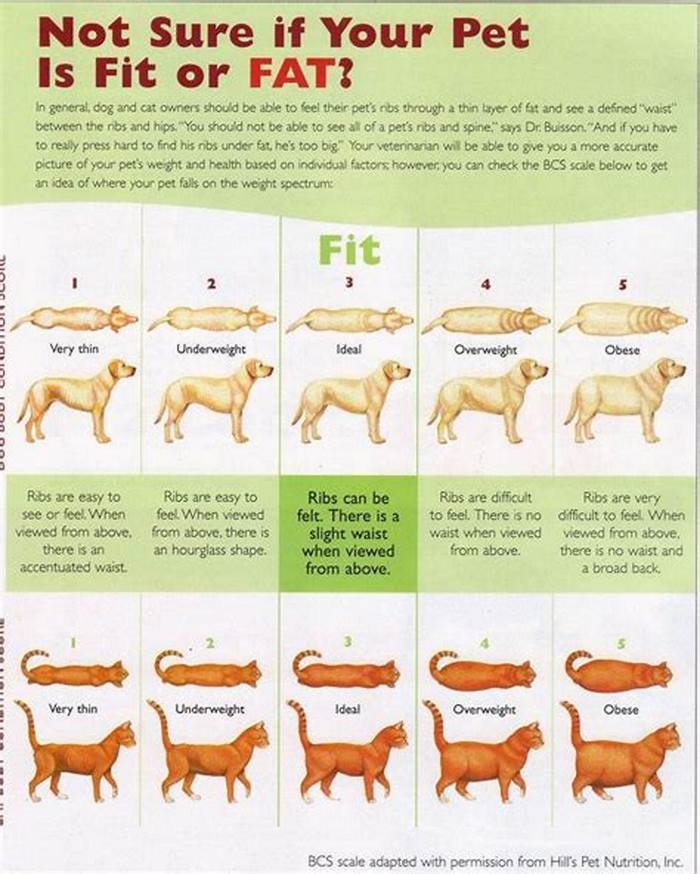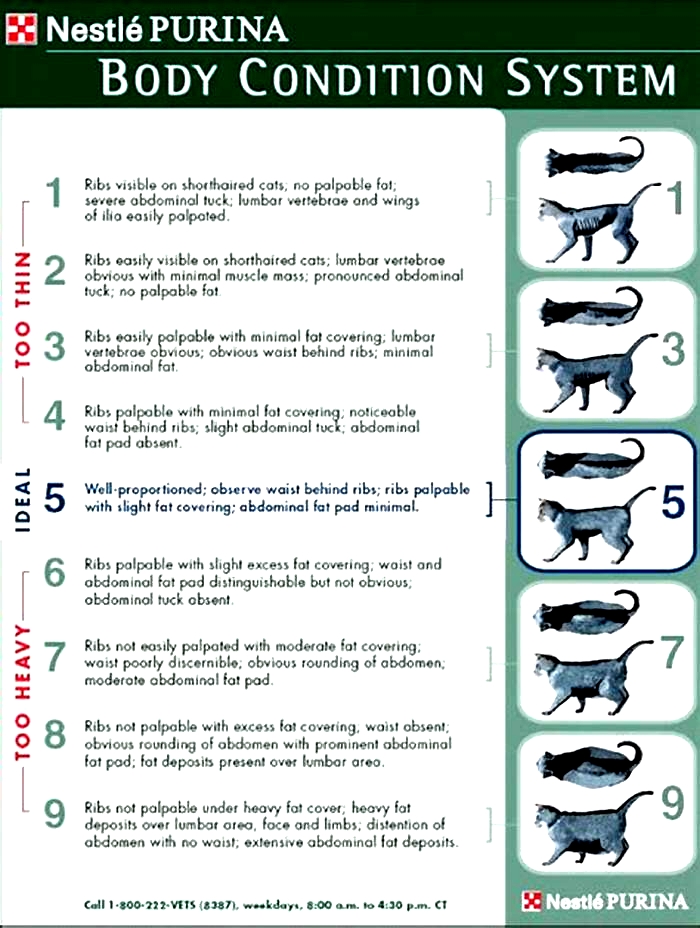Are any animals naturally fat

11 of the MOST Chubby Animals on the Planet
Are you ready to go on a wild journey and meet the chubbiest animals in the animal kingdom? From furry mammals to slimy sea creatures, each of these animals has their own unique way of packing on the pounds. Here are 11 chubby animals that may surprise you.
Come along and discover for yourself why these lovable critters are some of the most rotund members of the animal kingdom. We guarantee youll be amazed by the sheer amount of their fluffiness!
11 Chubby Animals
1. Seals

- Scientific Name: Pinnipedia
- Diet: Fish (cod, halibut, herring), squid, eel, lobster, and octopus
- Weight: Males weigh up to 8,500 lbs. (3,855.5 kilograms), while the females are much smaller, weighing 2,000 lbs. (907.18 kg)
Seals are among the most adored animals due to their round, chubby bodies and playful personalities. There are many species of seals, such as the spotted seal, gray seal, harp seal, hooded seal, and ringed seal, all sharing the same characteristics of rotund bellies and plump limbs, leaving them looking extra chubby.
Seals are chubby because they need to maintain enough body fat to survive in cold climates and turbulent ocean waters. Their thick fur helps keep them warm, and their layers of blubber help to insulate them against cold water temperatures.
This layer of fat can be up to 40 mm inches thick in some species! Seals also lack an external ear flap which helps them conserve heat while swimming underwater.
2. White rhinoceros

- Scientific Name: Ceratotherium simum
- Diet: Grasses such as Themeda triandra, Panicum maximum, P. coloratum, and Urochloa mossambicensis
- Wight: Males weigh up to 5,070 lbs. (2,300 kg), while females can reach up to 3,700 lbs. (1,700 kg)
The white rhinoceros of Africa is one of the most rotund animals in the world. It is one of the five species of rhinoceros and can be found grazing on grasses in a variety of habitats across Africa, from savannas to open woodlands.
This chubby animal is named for its wide body shape, which allows it to graze more effectively than other species. Its body is covered in a thick layer of fat and skin, which helps protect it from the often harsh African climates.
When fully grown, white rhinos can reach up to 5,070 lbs. (2,300 kg), making them one of the heaviest land animals after the elephant and hippopotamus. They are also one of the most endangered animals in the world, with only around 15,942 individuals remaining in the wild.
3. Manatee

- Scientific Name: Trichechus manatus
- Diet: Aquatic plants like seagrasses, duckweed, and algae.
- Weight: Around 2,200 lbs. (1,000 kg).
Also known as sea cows, manatees are huge, fully aquatic, mostly herbivorous marine mammals found in shallow coastal waters throughout the world. They are known for their gentle nature and chubby, round bodies that give them an almost cartoon-like appearance. These gentle giants have become popular with researchers and tourists due to their docile nature, unique physical attributes, and intelligence.
While these sea cows can weigh up to 2,200 lbs. they dont have a continuous layer of fat like seals or whales to keep them warm. Their body mass is mostly comprised of their intestines and stomachs, allowing them to feed on large amounts of vegetation.
4. Whales

- Scientific Name: Cetacea
- Diet: Plankton, krill, small fish, squid, copepod crustaceans.
- Weight: Baleen whales can reach up to 6,600 lb (3,000 kg), while sperm whales can weigh up to 90390 lbs (41,000 kg)
Whales are naturally and beneficially obese because they need more body fat than other marine animals to stay warm in cold ocean depths. The fatty tissue in whales bodies acts as an insulator, trapping body heat to ensure they dont become too cold.
This layer of blubber can range from 1-12 inches (2.5 30 cm) thick and is composed of fat, protein, and water, which also provide buoyancy as they swim through the water.
There are many species of whales in the world today, with baleen whales such as blue, bowhead, and humpback whales being some of the largest animals in the world. The sperm whale is the largest toothed predator in the world and can weigh up to 90390 lbs (41,000 kg).
5. Dolphins

- Scientific Name: Delphinidae
- Diet: Fish, cephalopods (such as squid and octopus), and crustaceans ( such as crab, lobster, crayfish, and shrimp.)
- Weight: 2,200 to 6,600 pounds (1,000 to 3,000 kilograms)
Dolphins are intelligent aquatic mammals found all over the world in both coastal waters and the open ocean. They are characterized by their rounded bodies, beak-like noses, and playful personalities. Dolphins are also quite chubby compared to other marine mammals, with their body mass composed mostly of blubber.
Different species of dolphins vary in size based on their diet and habitat. Here is a breakdown of the heaviest and largest dolphins in the world:
| Common Name | Size | Weight | Scientific name |
|---|---|---|---|
| Orca Killer Whale | Males: 20 to 26 ft. Females: 16 to 23 ft. | 6,000- 8,000 lbs | Orcinus orca |
| Long-Finned Pilot Whale | Males 22 ft. Females: 19 ft. | Males: 5,070 lbsFemales: 2,900 lbs | Globicephala melas |
| Short-Finned Pilot Whale | Male: 1320 ft. Female: 9.816.4 ft. | Male: 2,780 to 6,940 lbsFemale: 1,320 to 2,540 lbs | Globicephala macrorhynchus |
| False Killer Whale | Male: 8 to 12.5 ft.Female: 7.5 to 12 ft. | 300650 lbs | Tursiops truncatus |
| Rissos Dolphin | 8.5 to 13 ft. | 660 to 1,100 lbs | Grampus griseus |
| White-Beaked Dolphin | 7.5 ft. to 10.2 ft. | 397 to 780 lbs | Lagenorhynchus albirostris |
6. Hippopotamus

- Scientific Name: Hippopotamus amphibius
- Diet: Grass, fruit, and bark.
- Weight: 4,400 lbs. (2,000 kg).
The hippopotamus is a large semiaquatic mammal endemic to sub-Saharan Africa, often found in and around rivers, lakes, and swamps. This chubby mammal is the second-largest living land animal after elephants, weighing in at an average of 4,400 lbs. (2,000 kg). They are heavily built with a barrel-shaped torso, an enormous mouth and lips, and small eyes and ears.
Despite their size, hippos are quite agile and can reach speeds of up to 19 mph (30 km/h) on land, running faster than any other large land mammal. Another fun fact about hippos is that they can consume around 150 pounds of grass in a single night.
7. Polar Bears

- Scientific Name: Ursus maritimus
- Diet: Mainly seals and other marine mammals, but also fish, birds, eggs, and vegetation.
- Weight: Adult males weigh 990 lbs(450 kg), while female polar bears weigh 330-552 lbs (150250 kg).
Cuddly, cute, and chubby, polar bears are the worlds largest and most recognizable land carnivores. These Arctic residents have evolved to thrive in their extreme environment.
They have a thick layer of blubber that helps them stay warm even when swimming in icy waters and white, snowy fur that helps them blend into their surroundings.
Polar bears are the ultimate hibernators, spending up to 5 months of the year asleep in their dens. During this time, they rely on the thick layer of fat stored around their body for energy and warmth, allowing them to survive without food or water during this long period of torpor.
8. Gaur

The gaur, also known as the Indian bison, is the largest and tallest species of wild cattle found in the forests of India and Southeast Asia. These massive animals are the largest members of the bovine family, heavily built and stocky, with thick necks and powerful legs that are perfect for running through dense forests.
These massive wild cows have a high biological body mass index. This means that their bodies grow proportionately bigger as they grow older, which gives them their characteristic plump appearance.
9. Elephants

- Scientific Name: Elephas maximus
- Diet: Grass, leaves, bark, and roots
- Weight: Males weigh up to 12,000 lbs (5,400 kg), while females usually weigh between 5,400-7,700 lbs (2,450-3,500 kg).
Elephants are the worlds largest land animals, known for their impressive size, intelligence, and social behavior. While these impressive creatures are usually seen in the wild, they can be kept as pets or trained for use in circuses and other performances.
But despite their impressive size, elephants bodies only contain 10% fat. This means that, while they are relatively chubby compared to other land mammals, their body mass is mostly composed of muscle and bone.
Their skin is thick (up to 1 in (2.5cm) thick) and covered in wrinkle folds, helping to regulate their body temperature in extreme climates. According to scientists, these folds retain up to ten times more moisture than straight, flat skin.
10. Sea Lions

- Scientific Name: Otariinae
- Diet: Fish (herring, anchovies, rockfish, hake, and salmon), octopus, squid, and other marine invertebrates
- Weight: Males can weigh up to 840 lbs (380 kg), while females weigh an average of 540 lbs (245 kg).
Sea lions are large, fin-footed marine mammals of the eared seal family. They have a stocky build and webbed feet that make them excellent swimmers and diversthey can dive up to 450 and 900 feet in search of food!
Sea lions accumulate most of their body fat in a layer of blubber located slightly below the surface of their skin, making them look particularly chubby when seen in profile. In addition to providing insulation, this layer of fat also helps with buoyancy, allowing sea lions to float easily and conserve energy while swimming.
11. Gorillas

- Scientific Name: Gorilla
- Diet: Leaves, fruits, stems, and bark
- Weight: Male gorillas can weigh up to 400 lbs (180 kg), while female gorillas usually weigh between 100-200 lbs (45-90 kg).
Gorillas are the largest living primate species in the world. These gentle giants have a stocky, powerful build, broad chests, and larger stomachs, giving them a particularly chubby appearance.
Their thick skin is covered in short fur, helping to insulate their bodies and keep them warm during cold weather. In addition, gorillas have extra layers of fat around their stomachs and necks. This helps protect their organs from the cold temperatures they may experience while living in higher elevations or mountains.
Despite their large size, gorillas are gentle and peaceful creatures. They live in social groups called troops and communicate using a variety of sounds and body language to express themselves.
WildlifeInformer.com is your #1 source for free information about all types of wildlife and exotic pets. We also share helpful tips and guides on a variety of topics related to animals and nature.
Nutrition and healthy eating
Dietary fat: Know which to choose
Fat is an important part of your diet, but some kinds are healthier than others. Find out which to choose and which to avoid.
By Mayo Clinic StaffDietary fat is the fat that comes from food. The body breaks down dietary fats into parts called fatty acids that can enter the bloodstream. The body also can make fatty acids from the carbohydrates in food.
The body uses fatty acids to make the fats that it needs. Fats are important for how your body uses many vitamins. And fats play a role in how all cells in the body are made and work.
But all dietary fats are not the same. They have different effects on the body. Some dietary fats are essential. Some increase the risk for disease, and some help prevent disease.
Find out how different dietary fats affect your body and how to choose foods with healthier fats.
Types of fat
There are two main kinds of dietary fats: saturated fat and unsaturated fat. These terms describe the chemical makeup of the fatty acids.
Most foods have a mix of different kinds of fat. But some have higher levels of saturated fats, and others have higher levels of unsaturated fats. Key differences in fats include the following:
- Saturated fats. Saturated fats are usually solid at room temperature. The most common sources of saturated fats are meats and dairy products.
- Unsaturated fats. Unsaturated fats are usually liquid at room temperature. Vegetable oils, nuts and fish have mostly unsaturated fats. There are two types of unsaturated fats: monounsaturated and polyunsaturated.
Saturated fats in food
The Dietary Guidelines for Americans suggest that less than 10% of calories a day should be from saturated fats. The American Heart Association suggests a goal of 5% to 6% of daily calories from saturated fats.
Foods high in saturated fats include:
- Foods baked or fried using saturated fats.
- Meats, including beef, lamb, pork as well as poultry, especially with skin.
- Lard.
- Dairy products like butter and cream.
- Whole or 2% milk.
- Whole-milk cheese or yogurt.
- Oils from coconuts, palm fruits, or palm kernels.
Saturated fats can add up quickly in foods that combine ingredients. In U.S. diets, the most common sources of saturated fats are sandwiches, burgers, tacos and burritos foods that usually combine meat and dairy products. Baked goods with butter, full-fat ice cream and other desserts are also common sources of saturated fats.
Saturated fat tends to raise levels of cholesterol in the blood. Low-density lipoprotein (LDL) is called "bad" cholesterol. High-density lipoprotein (HDL) is called "good" cholesterol. Saturated fats raise the levels of both.
A high level of bad cholesterol in the bloodstream increases the risk heart and blood vessel disease.
Limited evidence suggest that saturated fats and high cholesterol levels may be linked to an increased risk of Alzheimer's disease or other diseases that cause dementia.
Monounsaturated fats in food
Monounsaturated fats are found in many foods, including red meats and dairy products. About half the fats in these foods are saturated and half monounsaturated.
Many plants and plant oils are high in monounsaturated fats but low in saturated fats. These include:
- Oils from olives, peanuts, canola seeds, safflower seeds, and sunflower seeds.
- Avocadoes.
- Pumpkin seeds.
- Sesame seeds.
- Almonds.
- Cashews.
- Peanuts and peanut butter.
- Pecans.
Monounsaturated fats from plants may lower bad cholesterol and raise good cholesterol. They also may improve the control of blood sugar levels.
Replacing saturated fats with monounsaturated fats in the diet may lower the level of bad cholesterol and triglycerides in the blood. Triglycerides are fat cells that circulate in the bloodstream and are stored in the bodys fat cells. A high level of triglycerides in the blood increases the risk of diseases of the heart and blood vessels.
Eating plant foods high in monounsaturated fats, particularly extra virgin olive oil and tree nuts, may benefit heart health and blood sugar regulation.
Polyunsaturated fats in food
The two categories of polyunsaturated fats are omega-6 fatty acids and omega-3 fatty acids.
Omega-6. Sources of omega-6 fatty acids include:
- Corn oil.
- Cottonseed oil.
- Peanut oil.
- Soybean oil.
- Sunflower oil.
Benefits of a diet high in omega-6 fatty acids, especially when they replace saturated fats, may be linked to:
- Lower bad cholesterol.
- Lower triglycerides.
- Higher good cholesterol.
- Better blood sugar control.
Omega-3. Sources of omega-3 fatty acids include oily fish, seeds and nuts:
- Fish such as salmon, anchovies, mackerel, herring, sardines and tuna.
- Oils from canola seeds, soybeans, walnuts and flaxseed.
- Soybeans.
- Chia seeds.
- Flaxseed.
- Walnuts.
Diets high in omega-3 fatty acids may have health benefits, including:
- Lowering levels of triglycerides in the blood.
- Lowering the risk of heart and blood vessel diseases.
Trans fats in food
Trans fats are a type of fat that raises bad cholesterol and lowers good cholesterol. There are very small amounts of naturally occurring trans fat in meats and dairy from grazing animals, such as cows, sheep and goats.
But most trans fats are in plant oils that have been chemically changed to be a solid fat. These are called partially hydrogenated oils. At one time, trans fat oils were thought to be a healthy choice to replace saturated fats. They also were inexpensive and a had a long shelf life.
The U.S. Food and Drug Administration determined that artificially created trans fats are "no longer recognized as safe" in foods. They are no longer used in U.S. food production. They may still be used in other countries.
How can I start eating healthier?
A healthy diet is a balance between taking in enough calories and nutrients for your level of activity. Your health care provider or a dietician can help you understand goals for calories, nutrients and types of foods to eat.
One thing to consider is that each gram of fat has 9 calories. That's true for all fats. So calories can add up quickly, even with healthy fats. For example, walnuts are a healthy snack high in polyunsaturated fats. But just a dozen walnut halves contain about 160 calories more calories than in one large apple.
The key message about fats is to focus on eating healthy fats and limiting unhealthy fats. Eat more fruits, vegetables, legumes, nuts, seeds and whole grains that are rich in vitamins, nutrients and fiber.
Try these tips to reduce unhealthy fat in your diet:
- Use plant-based oils instead of butter or lard. For example, saute vegetables with olive oil instead of butter. Use canola oil for hot cooking, such as searing or stir frying.
- Add fish to your diet, especially oily fish.
- Choose lean meat and skinless poultry. Trim visible fat from meat. Remove fat and skin from poultry.
- Eat and drink low-fat dairy products.
- Reach for whole fruits and vegetables when you're hungry.
- Limit processed foods, which often contain saturated fat.
- Check labels on low-fat or fat-free processed food, which may have lots of added sugars and sodium (salt).
From Mayo Clinic to your inbox
Sign up for free and stay up to date on research advancements, health tips, current health topics, and expertise on managing health. Click here for an email preview.
ErrorEmail field is required
ErrorInclude a valid email address
To provide you with the most relevant and helpful information, and understand which information is beneficial, we may combine your email and website usage information with other information we have about you. If you are a Mayo Clinic patient, this could include protected health information. If we combine this information with your protected health information, we will treat all of that information as protected health information and will only use or disclose that information as set forth in our notice of privacy practices. You may opt-out of email communications at any time by clicking on the unsubscribe link in the e-mail.
Thank you for subscribing!
You'll soon start receiving the latest Mayo Clinic health information you requested in your inbox.
Sorry something went wrong with your subscription
Please, try again in a couple of minutes
Feb. 15, 2023- Duyff RL. Fat facts. In: Academy of Nutrition and Dietetics Complete Food and Nutrition Guide. 5th ed. Houghton Mifflin Harcourt; 2017.
- Dietary reference intakes for energy, carbohydrate, fiber, fat, fatty acids, cholesterol, protein, and amino acids (macronutrients). National Academies of Sciences, Engineering, and Medicine. https://nap.nationalacademies.org/read/10490/chapter/1. Accessed Jan. 12, 2023.
- The skinny on fats. American Heart Association. https://www.heart.org/en/health-topics/cholesterol/prevention-and-treatment-of-high-cholesterol-hyperlipidemia/the-skinny-on-fats. Accessed Jan. 12, 2023.
- 2020-2025 Dietary Guidelines for Americans. U.S. Department of Health and Human Services and U.S. Department of Agriculture. https://www.dietaryguidelines.gov. Accessed Jan. 16, 2023.
- Saturated fat. American Heart Association. https://www.heart.org/en/healthy-living/healthy-eating/eat-smart/fats/saturated-fats. Accessed Jan. 12, 2023.
- Mozaffarian D. Dietary fat. https://www.uptodate.com/contents/search. Accessed Jan. 12, 2023.
- Monounsaturated fats. American Heart Association. https://www.heart.org/en/healthy-living/healthy-eating/eat-smart/fats/monounsaturated-fats. Accessed Jan. 12, 2023.
- Interactive nutrition facts label: Monounsaturated and polyunsaturated fats. Food and Drug Administration. https://www.accessdata.fda.gov/scripts/interactivenutritionfactslabel/fat.cfm. Accessed Jan. 17, 2023.
- Omega-3 fatty acids fact sheet for consumers. National Institutes of Health. Office of Dietary Supplements. https://ods.od.nih.gov/factsheets/Omega3FattyAcids-Consumer/. Accessesd Jan. 16, 2023.
- FoodData Central. U.S. Department of Agriculture, Agricultural Research Service. https://fdc.nal.usda.gov. Accessed Jan. 18, 2023.
- Trans fat. American Heart Association. https://www.heart.org/en/healthy-living/healthy-eating/eat-smart/fats/trans-fat. Accessed Jan. 12, 2023.
- Final determination regarding partially hydrogenated oils (removing trans fat). Food and Drug Administration. https://www.fda.gov/food/food-additives-petitions/final-determination-regarding-partially-hydrogenated-oils-removing-trans-fat. Accessed Jan. 13, 2023.
- Colditz GA. Healthy diet in adults. https://www.uptodate.com/contents/search. Accessed Jan. 12, 2023.
- Nordestgaard LT, et al. Shared risk factors between dementia and atherosclerotic cardiovascular disease. International Journal of Molecular Sciences. 2022; doi:10.3390/ijms23179777.
- FoodData Central. U.S. Department of Agriculture, Agricultural Research Service. https://fdc.nal.usda.gov. Accessed Feb. 6, 2023.









